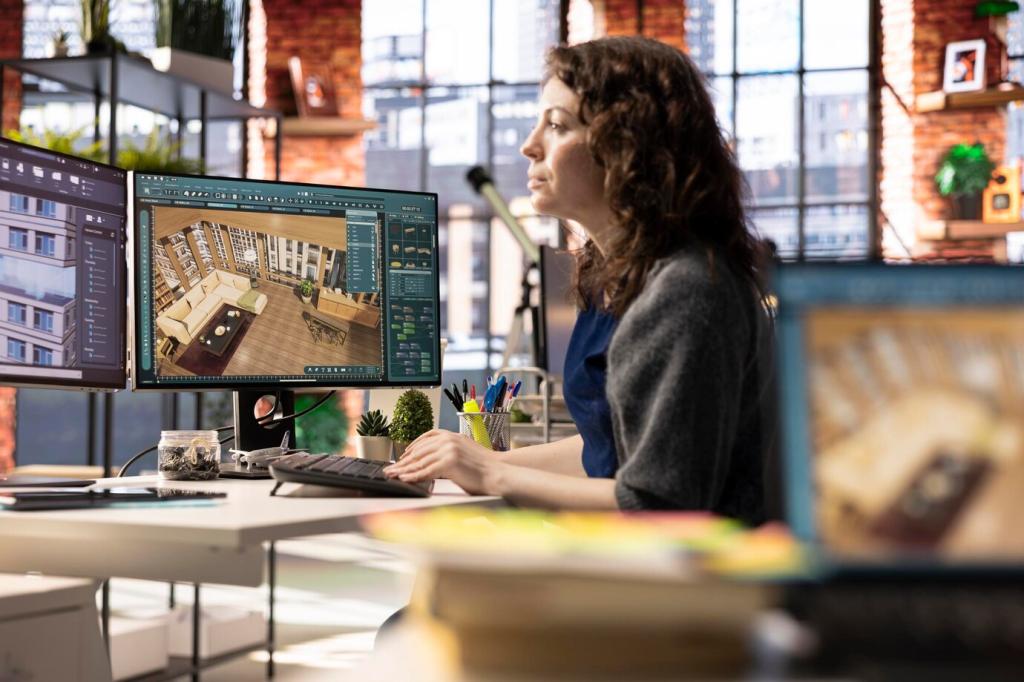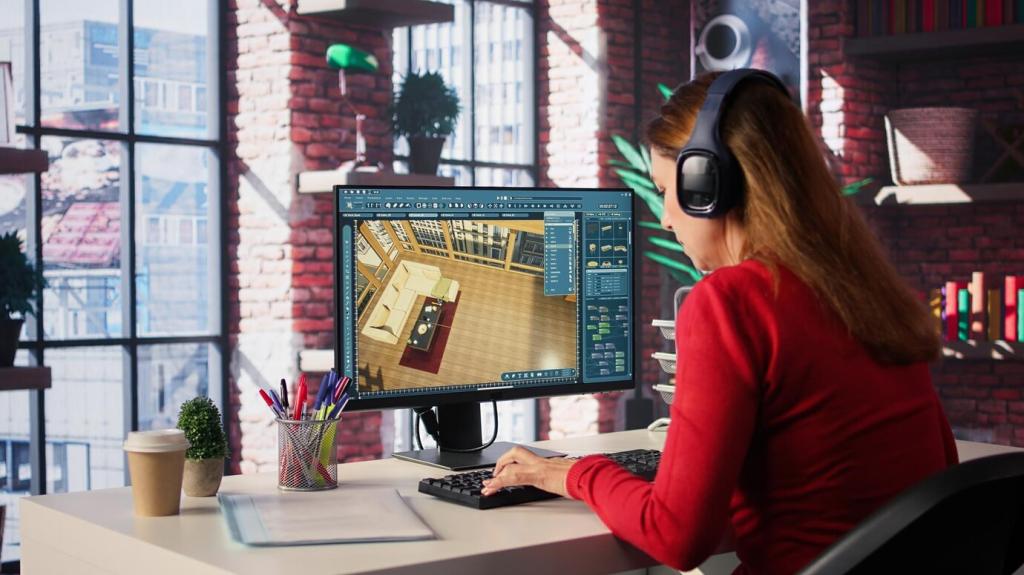
The Role of AI in Interior Design: From Vision to Living Reality
Today’s feature explores the chosen theme: The Role of AI in Interior Design. Discover how intelligent tools accelerate creativity, sharpen decisions, and help you shape rooms that feel personal, sustainable, and beautifully livable. Subscribe to stay inspired and share your AI design questions.



AI for Space Planning and Layout Optimization
Traffic flow heatmaps
By analyzing walking paths, door swings, and bottlenecks, AI highlights collisions between chores and comfort. You’ll see where stools snag, doors clash, and rugs trip. Ask for a flow map of your busiest room today.
Zoning that fits your lifestyle
Whether you host game nights or crave quiet reading coves, AI tests acoustic zones, sightlines, and storage reach. It fits flexible dividers, islands, or shelving to reinforce purpose. Share your top three activities at home.
Small-space, big-feel strategies
In compact apartments, AI proposes convertible furniture, sliding partitions, and nesting surfaces. It checks clearances, reveals hidden storage, and frames natural light. Submit your square footage, and we’ll suggest smart multi‑use moves.



AI-Powered Visualization and Mood Boards
Test walnut versus oak, microcement versus terrazzo, velvet versus bouclé. AI previews texture interplay, color cast, and maintenance implications. You’ll know whether a material suits your pets, habits, and budget long before purchase day.
AI-Powered Visualization and Mood Boards
Lighting makes or breaks a scheme. AI simulates seasonal daylight, then layers ambient, task, and accent fixtures. Watch glare shrink, shadows soften, and art glow. Paste your window orientation, and we’ll shape a lighting plan.
Preference modeling without creepiness
Instead of scraping your life, we ask direct questions and analyze choices within the app. AI respects boundaries while recognizing patterns, like your preference for matte finishes or curved edges. Tell us your must‑avoid textures and why.
Adaptive furniture recommendations
AI maps body posture, reach zones, and household size to suggest sofa depths, table heights, and modular pieces. It balances comfort with circulation so rooms breathe. Share your height, guests per month, and storage needs for ideas.

Life-cycle clarity, not greenwash
AI cross-references supplier data with independent research to estimate impacts honestly. You’ll see trade-offs between bamboo, cork, or reclaimed wood, including adhesives and finishes. Share one product you love, and we’ll assess its footprint.

Circular options and local finds
From refurbished lighting to reclaimed tile, AI surfaces nearby sources that fit your palette and budget. It matches patina with purpose, avoiding waste. Tell us your city, and we’ll compile circular materials and artisans worth visiting.

Energy-aware layouts that pay back
Position desks to reduce glare and cooling loads, or shift seating to capture winter sun. AI suggests window treatments and lamp temperatures that save energy quietly. Ask for an energy‑first rearrangement of your living room today.
Human + AI Collaboration in the Studio
AI proposes abundant alternatives; the designer selects, edits, and contextualizes. Craft emerges from taste, not templates. This partnership frees time for details that matter. Tell us where you need a creative push versus a careful polish.

Training data can overrepresent certain aesthetics. We diversify references and flag skewed suggestions. You can recalibrate the model toward underrepresented styles. Share a style you love that algorithms often overlook, and we will honor it.
Ethics, Bias, and Trust in AI-Driven Interiors
Your inputs stay purpose-bound. We minimize data, offer opt‑outs, and explain decisions in plain language. Transparency builds collaboration, not control. Ask how we handle your preferences, and we’ll show clear, human‑readable summaries anytime.
